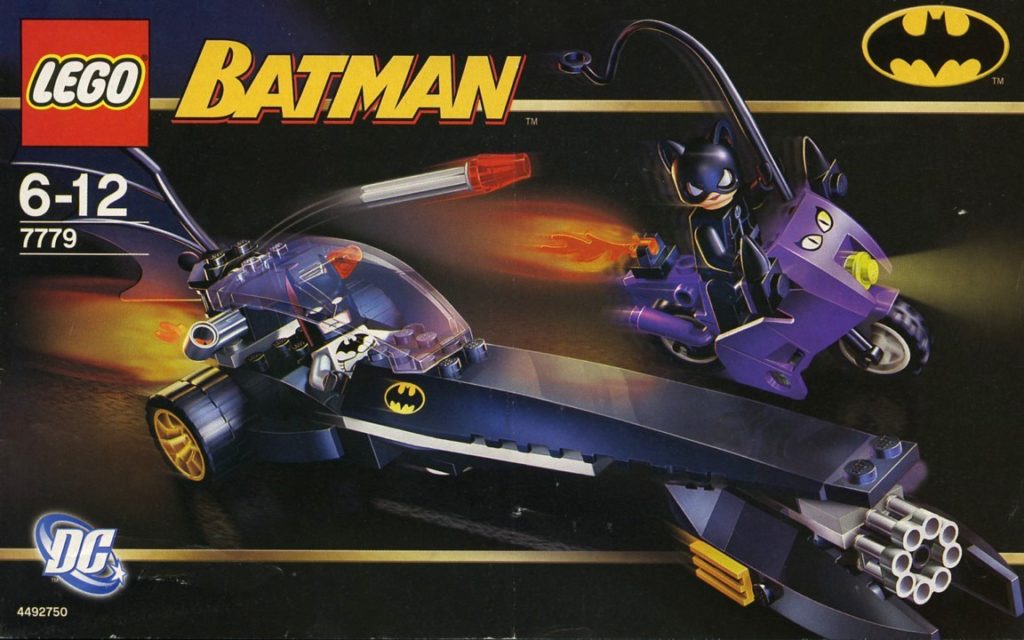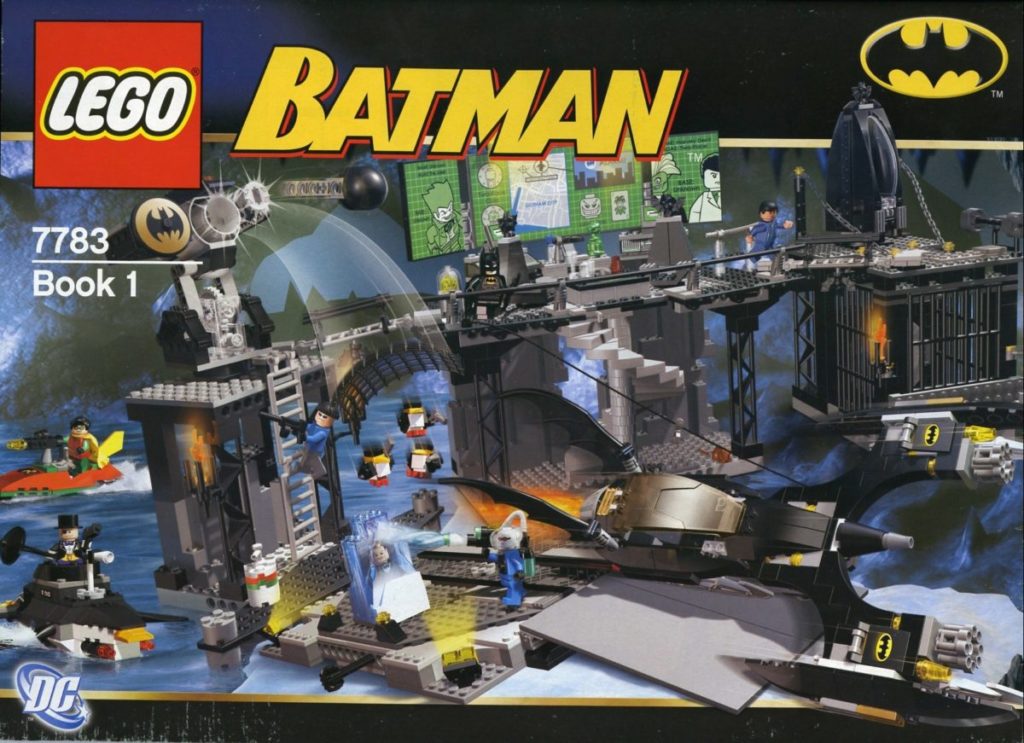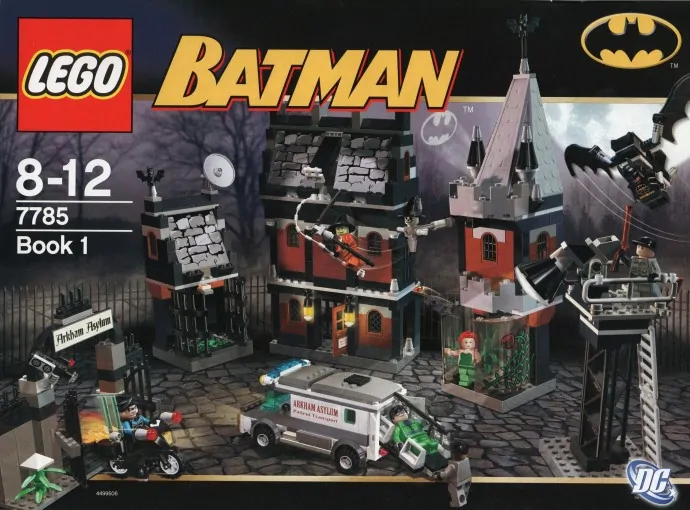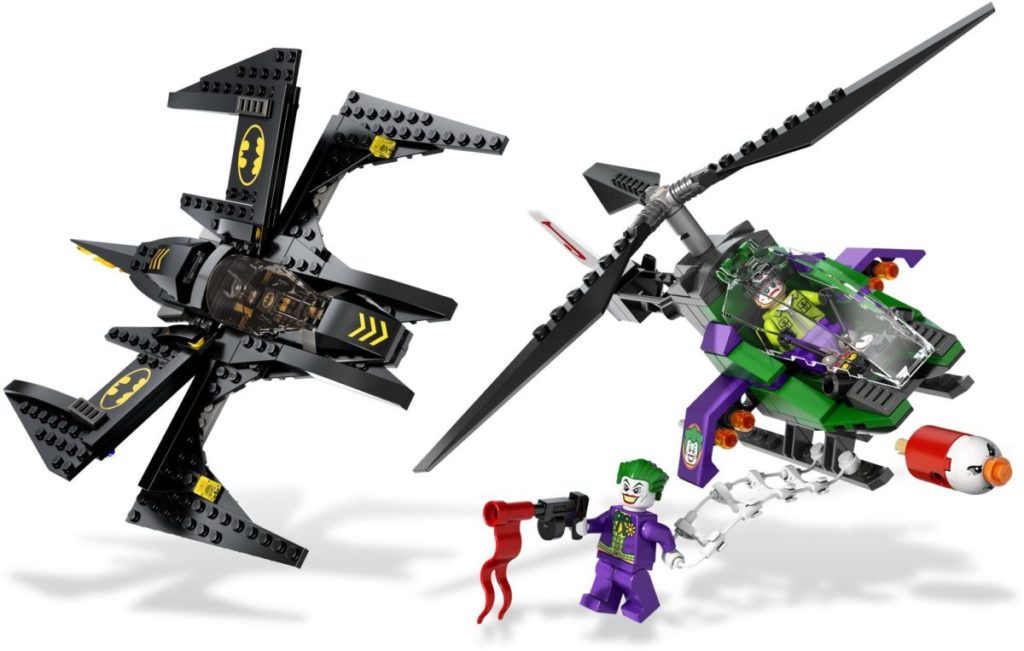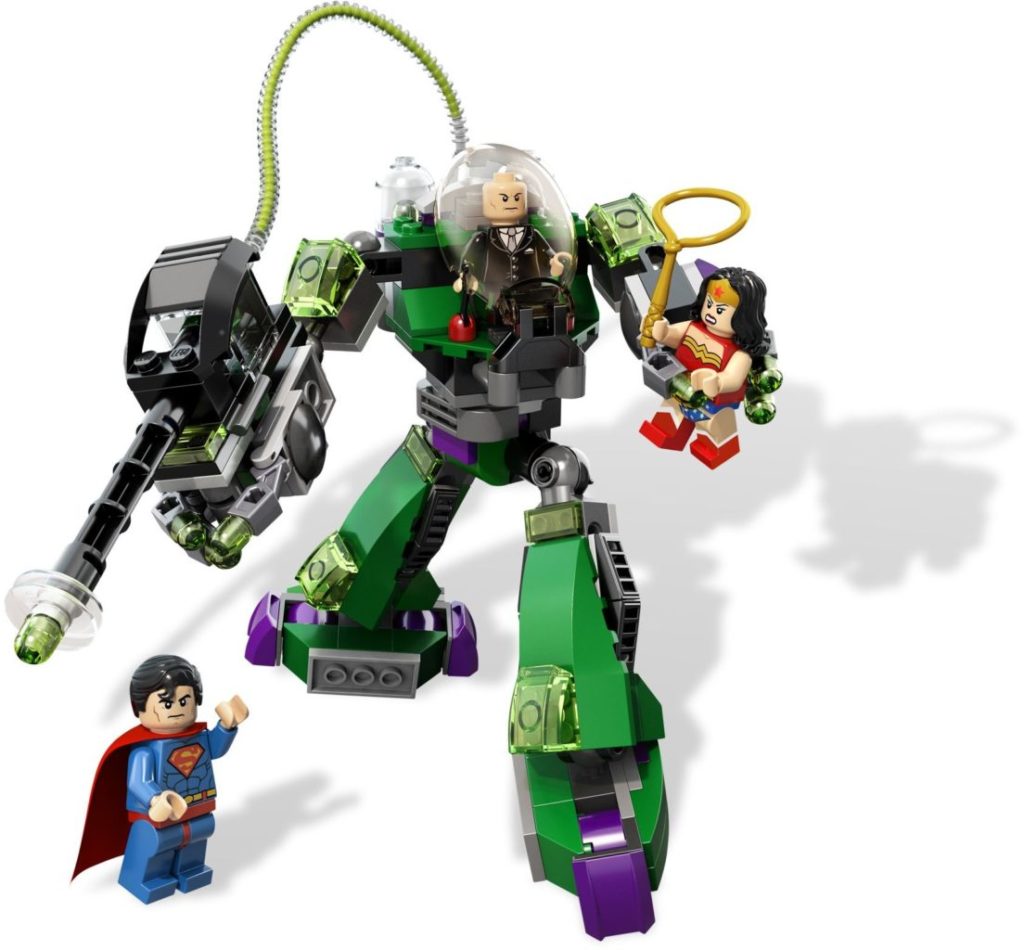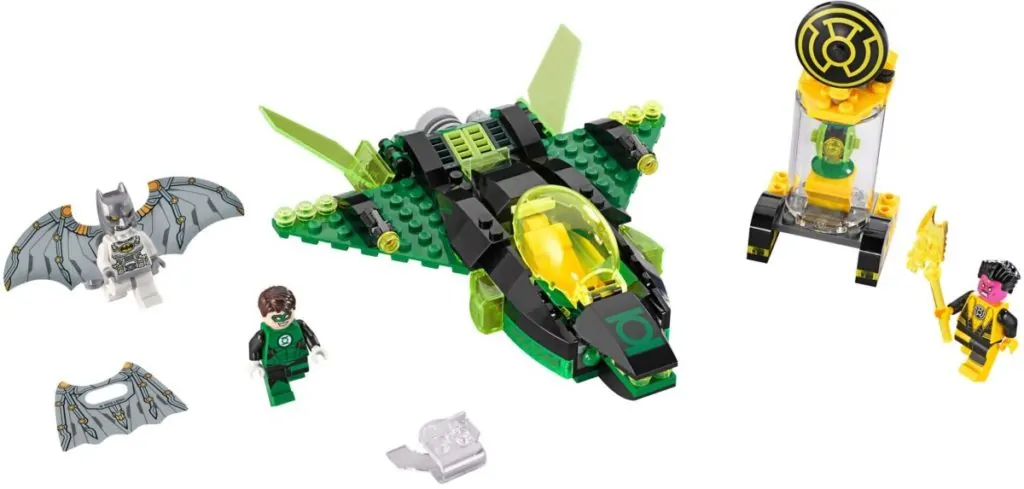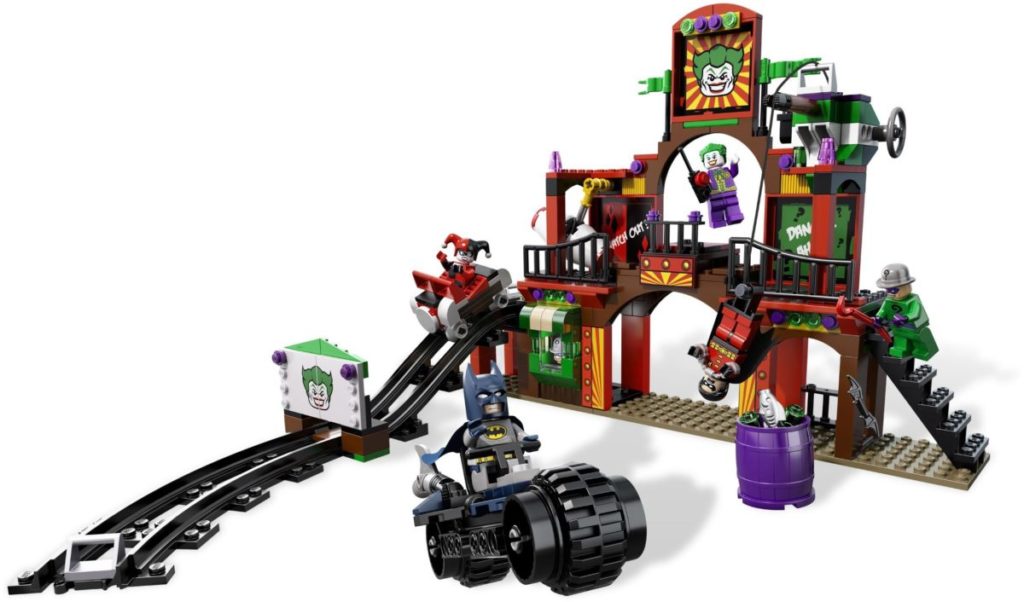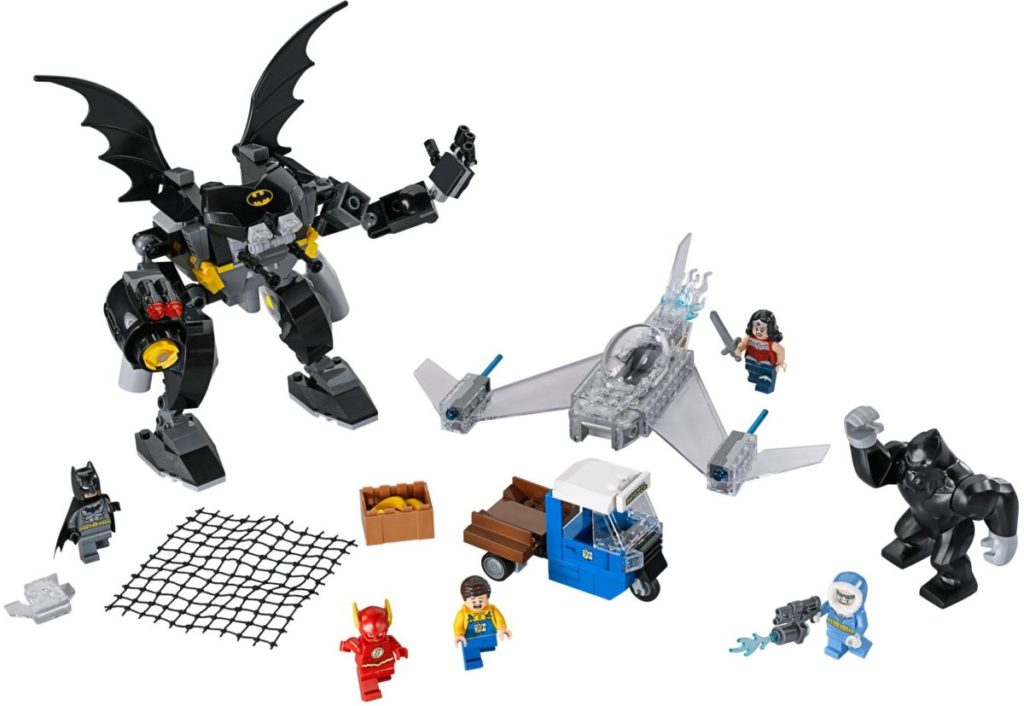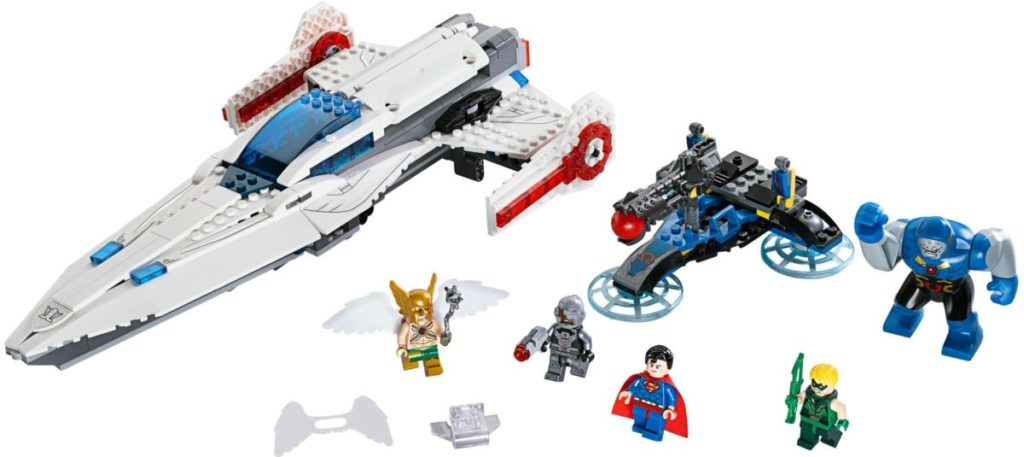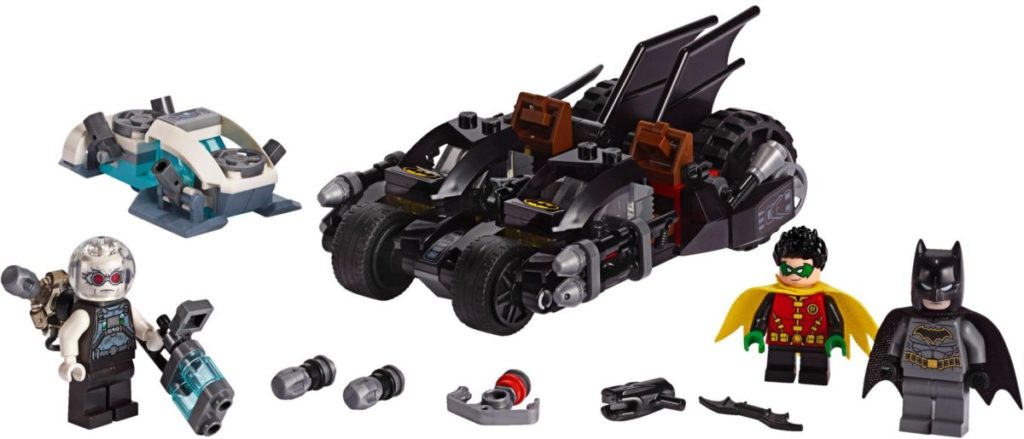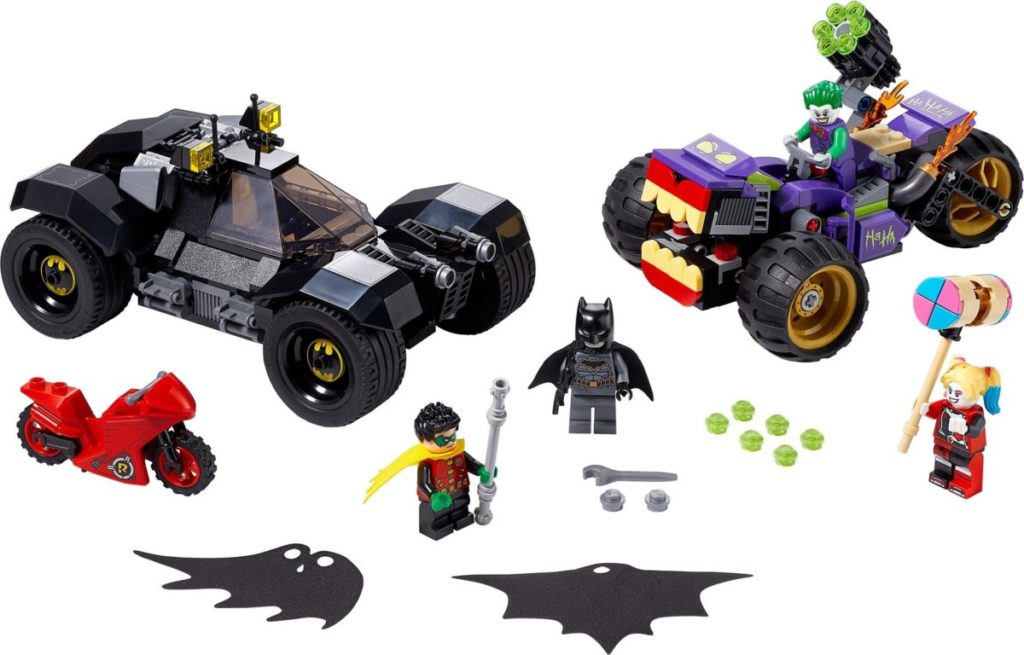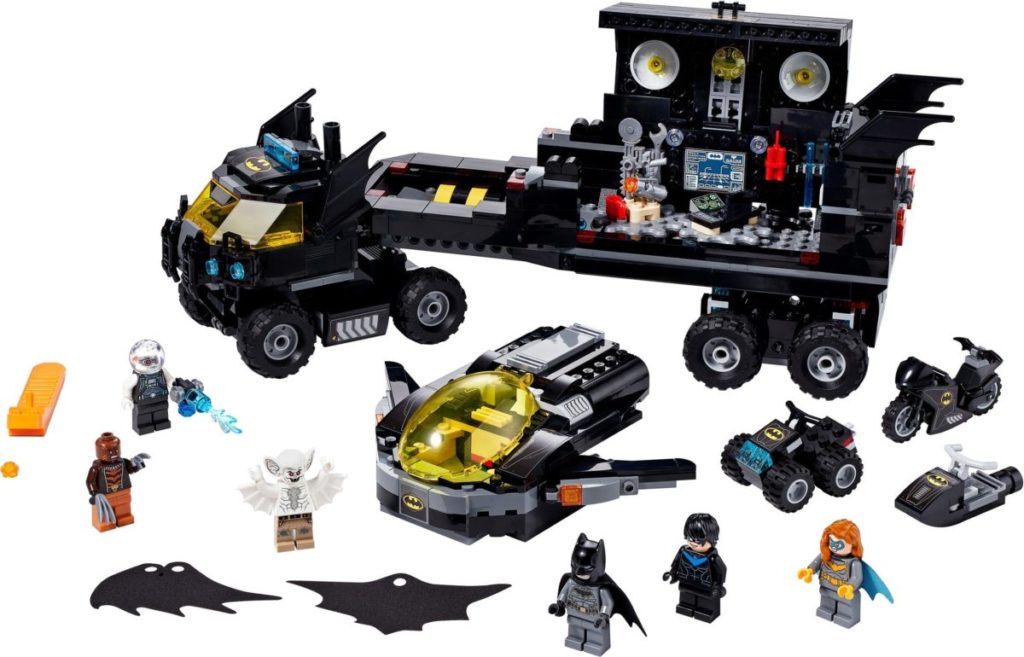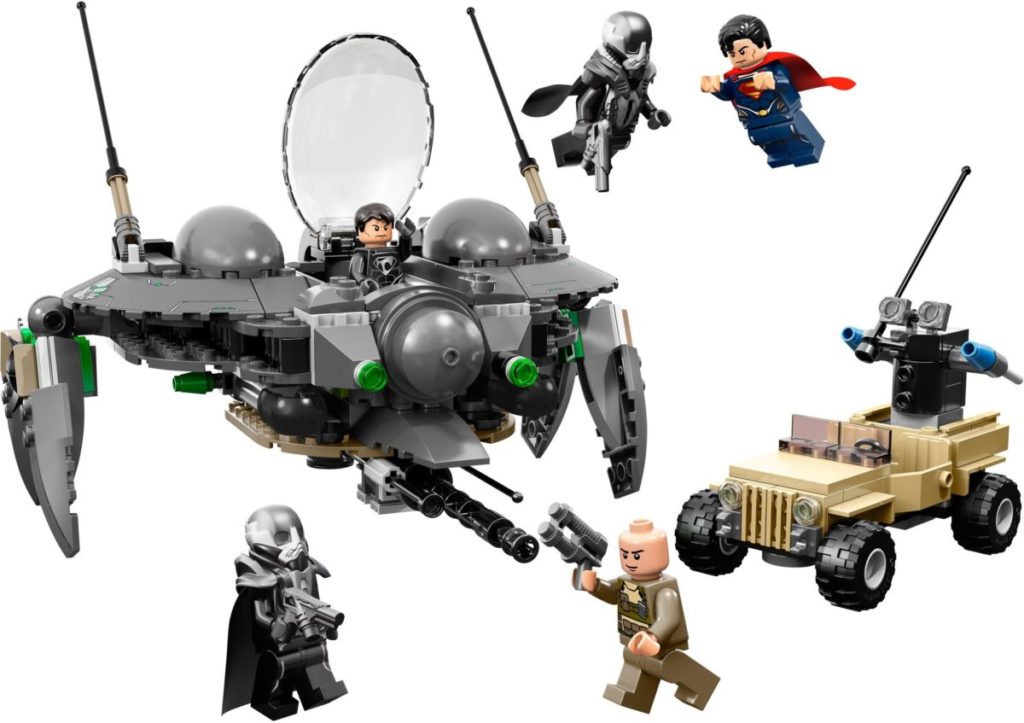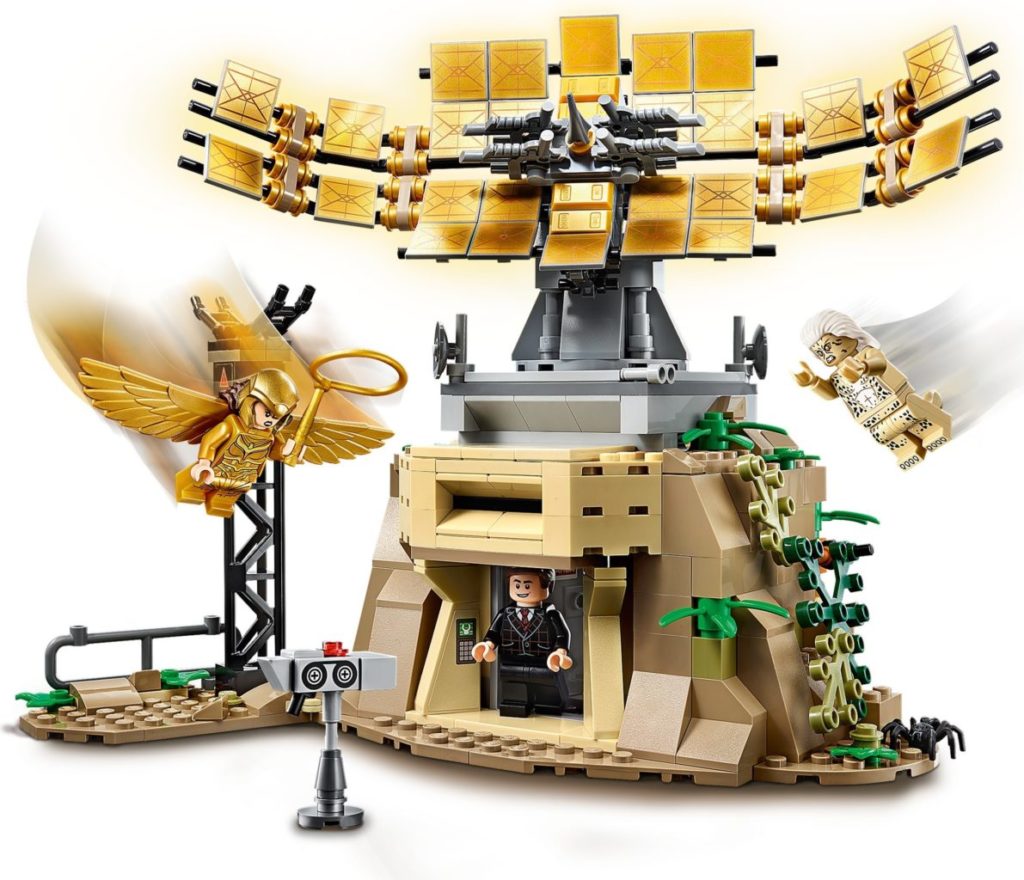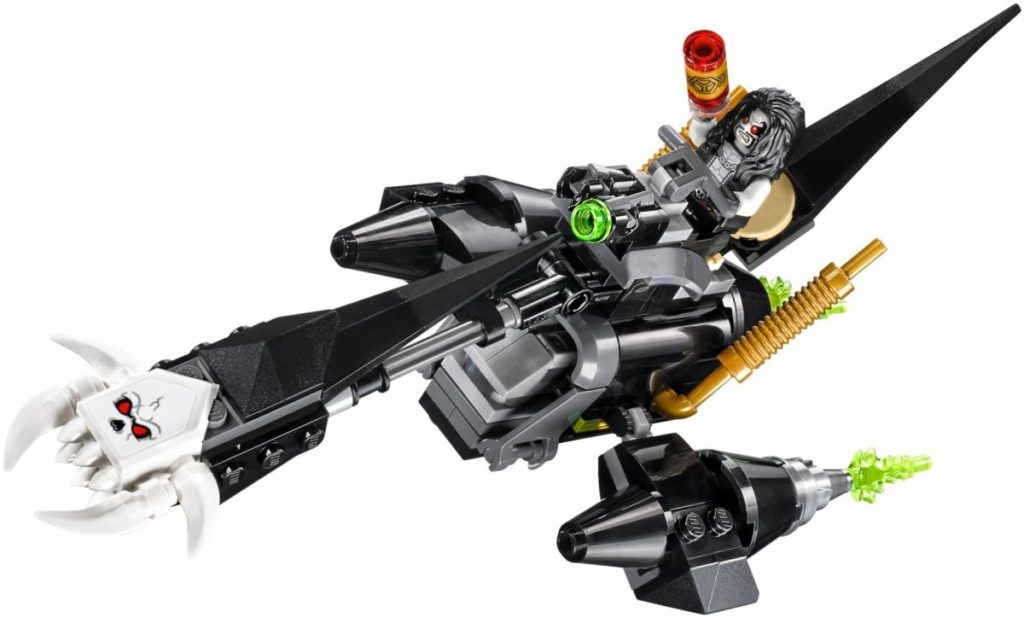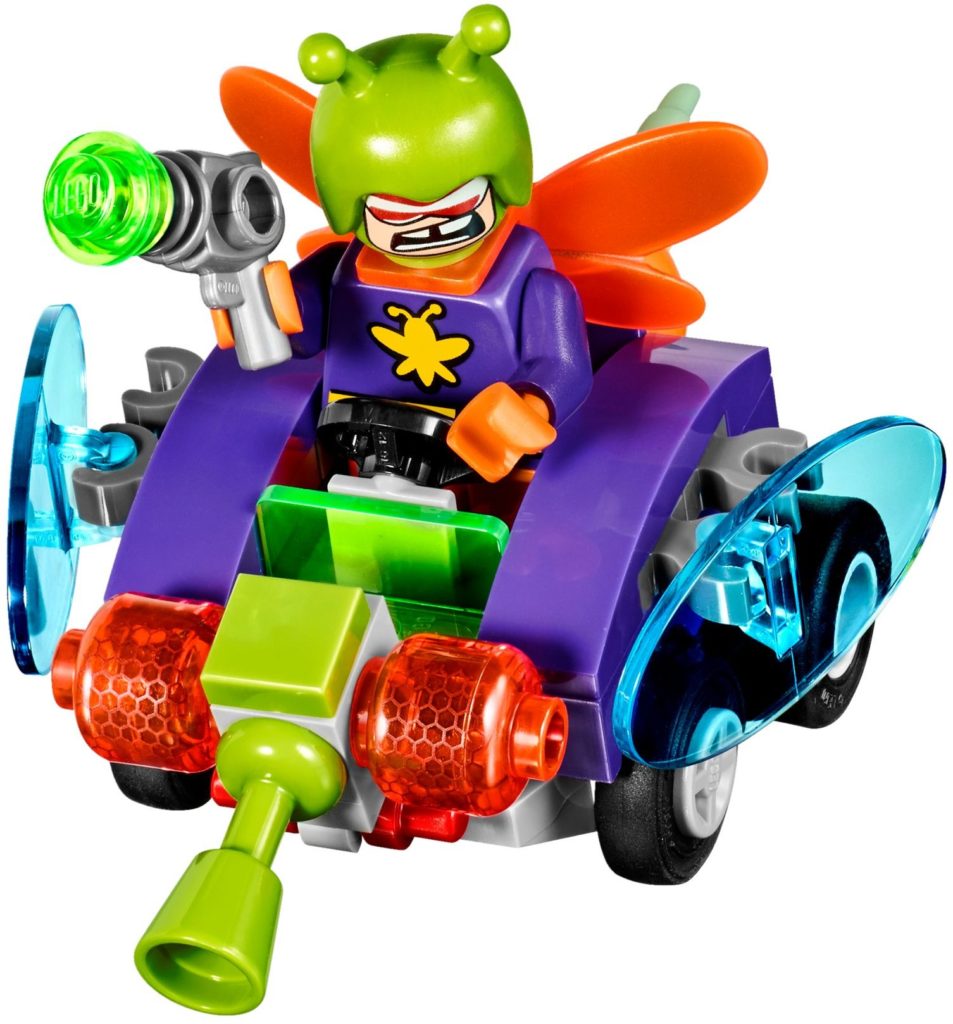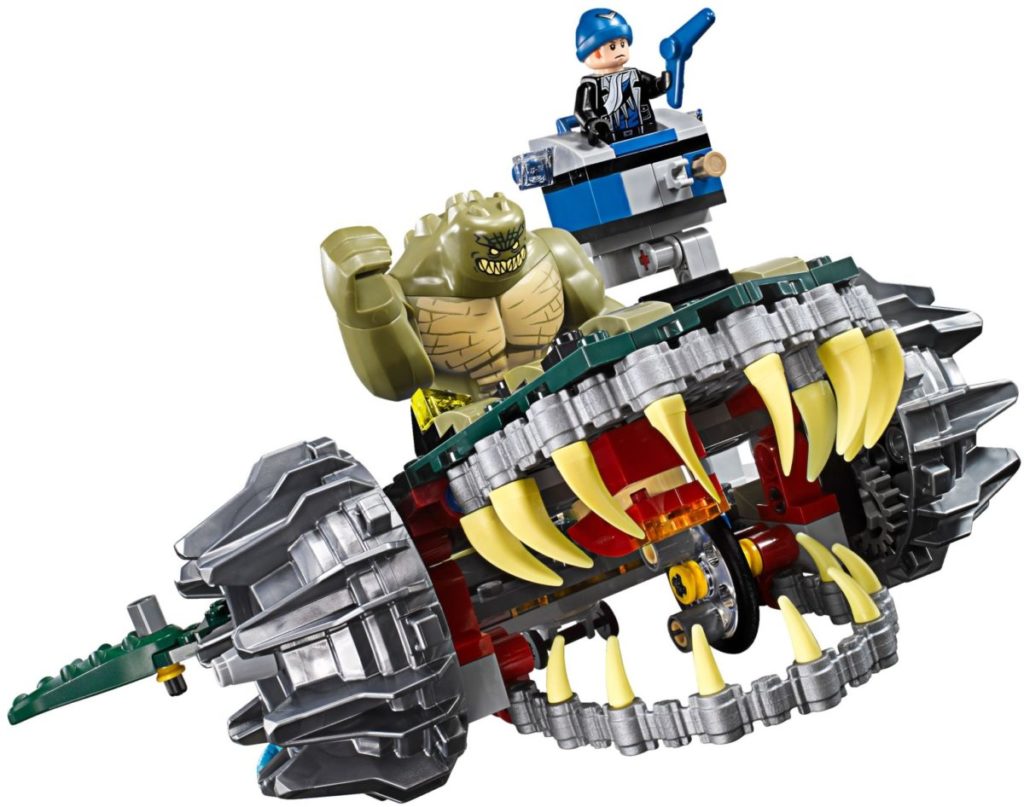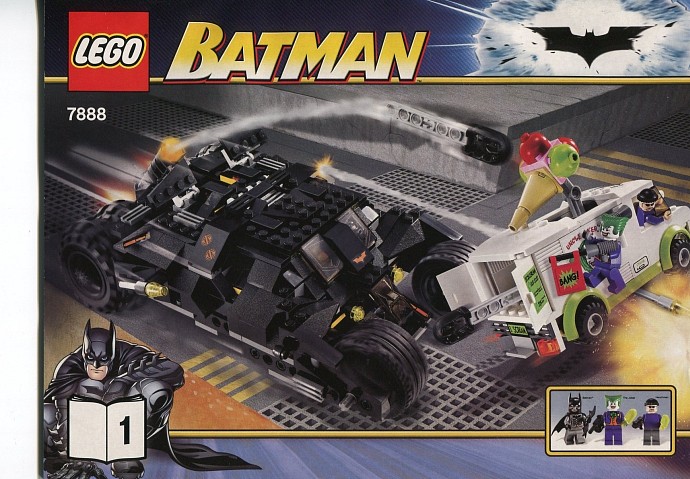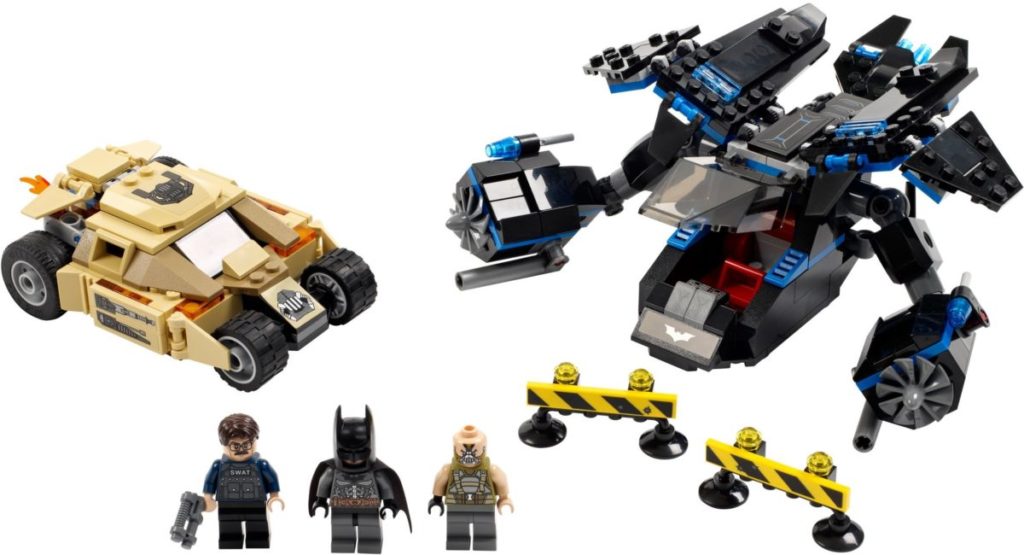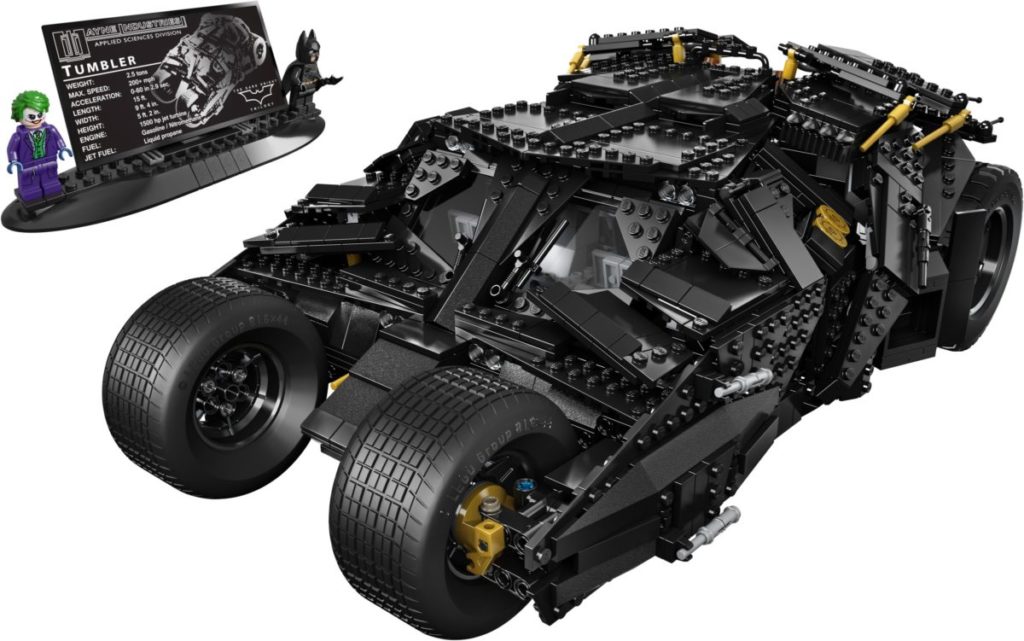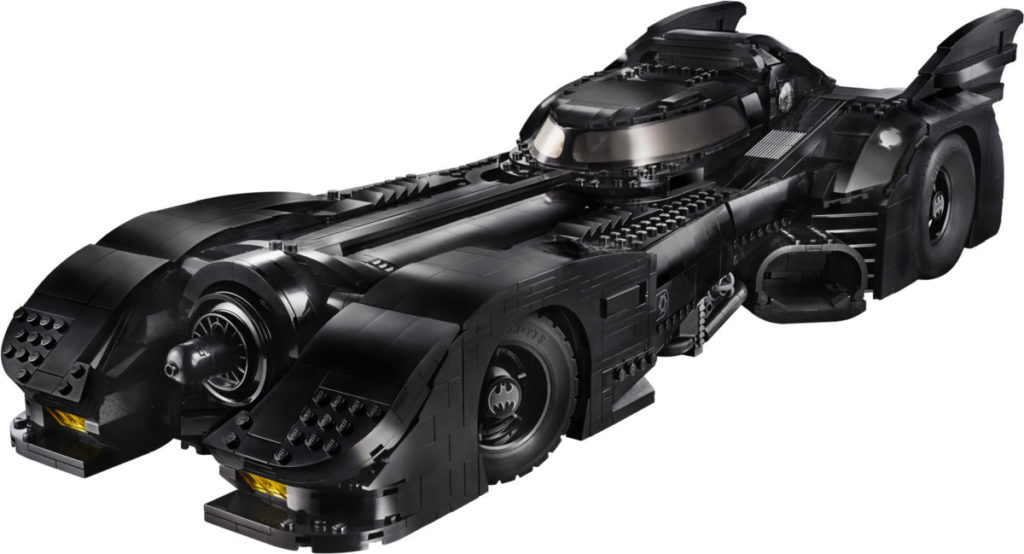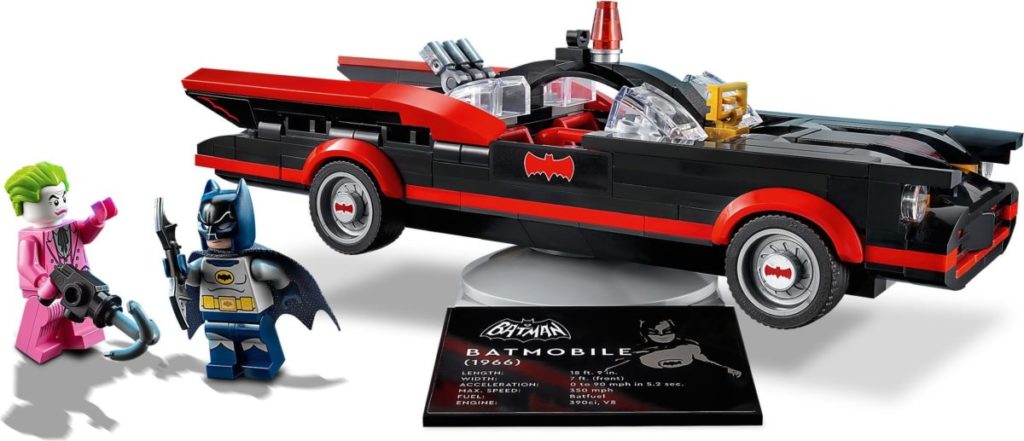Your basket is currently empty!
LEGO DC Super Heroes
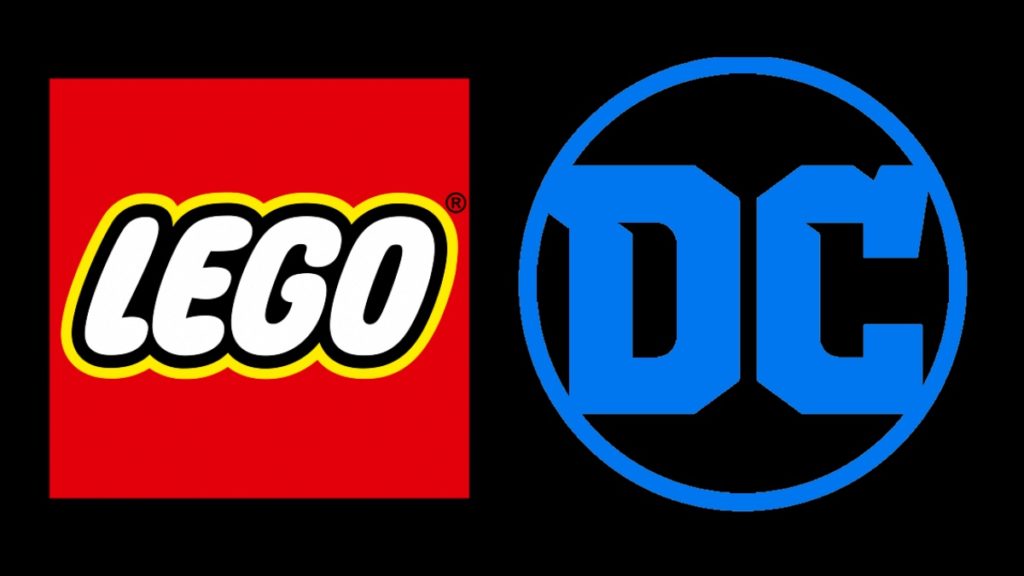
Look, up in the sky! It’s a bird! It’s a plane! It’s some of the world’s most iconic comic book characters, in LEGO form!
In 2011, the LEGO Group started to produce a range of sets inspired by the DC universe. Despite – or perhaps because of – the broader cultural awareness of these characters, DC Comics Super Heroes has gone in a slightly different direction to other licensed themes. While not quite as prolific as other themes like Marvel or Star Wars, the theme has given us some highly memorable and enjoyable sets during its lifespan.
Visit LEGO.com to check out the current DC Comics roster.
LEGO DC History
The LEGO Group first explored licensed DC sets with the Batman theme, which launched in 2006. This focused on the Caped Crusader and his rogues gallery, with favourites like the Joker, Two-Face and Catwoman all making an appearance.
In some respects, the Batman range would echo the direction of the later DC theme. While it drew inspiration from DC’s past, it rarely referenced a specific iteration of it. Even 7888 The Tumbler: Joker’s Ice Cream Surprise took a rather flexible approach to its source material, 2008’s The Dark Knight.
DC Comics Super Heroes first appeared as a theme in 2011, with a number of convention-exclusive minifigures. While characters like Batman were hardly new to LEGO, others like Superman and Green Lantern were rather more exciting. A range of sets for a broader audience popped up next year, with a mix of conventional LEGO sets and ‘constraction’ figures. Mimicking older themes like Hero Factory and Ben 10, these figures depicted Batman, the Joker and Green Lantern. Records indicate they didn’t stick around for long, leaving store shelves shortly after arriving on them.
While Batman dominated the early DC sets (and the later ones, for that matter), Superman, Wonder Woman and Lex Luthor would clash in 6862 Superman vs. Power Armor Lex. Other DC characters like the Flash, Aquaman and Green Lantern would gradually emerge, though typically they were joined by Batman in their fight against evil.
The infrequent release of DC movies also meant LEGO DC sets had to get creative. 2013 saw the first sets inspired by the DC Extended Universe, with Man of Steel’s Superman receiving three sets. Later releases like Batman v Superman: Dawn of Justice, Justice League and Aquaman would also receive varying numbers of tie-in sets. These were interspersed with the more generic models we’d seen previously, with the Mighty Micros (a more juniorised subtheme) offering some deeper dives into DC history. For the first time, fans of Bizarro, Killer Moth and Doomsday had LEGO minifigures to enjoy, if not quite how they expected.
As we approached the 2020s, the DC Comics Super Heroes range came full circle; almost all of the DC sets from this era would focus on Batman and his associates. There were two notable exceptions, however. 2019’s 76120 Batwing and The Riddler Heist features a cameo from Shazam, an infrequent visitor to the DC range. Wonder Woman, Cheetah and Maxwell Lord would also appear a year later, in 76157 Wonder Woman vs. Cheetah. Both of these appearances were inspired (implicitly or explicitly) by Shazam! and Wonder Woman 1984, which released the same years as the sets did.
So what does the future hold for DC LEGO sets? It’s likely that Batman will maintain his starring role for a while. Most DC Comics characters lack the mass appeal of their Marvel rivals, and the uneven reception to DC’s recent movies hasn’t quite changed that. Even so, DC Comics Super Heroes offers plenty for the dedicated DC fan.
LEGO DC sets
With their roots in the early days of superhero comics, DC characters have taken on many guises over the years. Characters like Batman are as comfortable in Adam West’s Gotham as they are Frank Miller’s. For LEGO sets – which tend to target younger audiences – this makes DC an ideal partner. It allows the Lego Group to approach DC comics sets from multiple directions, all of which are worthwhile.
That said, DC sets have frequently leant into the comics’ camper side, with plenty of bright colours and retro throwbacks. 6857 The Dynamic Duo Funhouse Escape is a stand-out from the early period – as the Joker’s domain, it features plenty of play features and a delightful clashing colour scheme. Its characters also draw heavy inspiration from the ‘60s and ‘70s; the Riddler seems plucked from a ‘60s Batman episode, while Batman himself sports his classic blue and grey colour scheme.
6862 Superman vs. Power Armor Lex is similarly vibrant. Lex Luthor’s robot features a classic green and purple colour scheme, reflecting many of his comics costumes. Superman and Wonder Woman, meanwhile, are similarly bedecked in primary colours. Since the set debuted all three characters in a conventional set, this was a rare treat for LEGO fans.
In some respects, the lack of movie material has been a blessing in disguise for DC, as it’s allowed the sets to travel in directions they might never have otherwise. 76026 Gorilla Grodd Goes Bananas is a smorgasbord of unusual characters; the ape himself is an obvious inclusion, as is the Flash – his traditional rival in the comics. The main builds are also a draw, as Batman brings a giant robot to throw down in, and Wonder Woman swoops in with the first LEGO invisible jet.
76028 Darkseid Invasion is similarly fruitful. Drawing inspiration from the 2001 Justice League cartoon, the set features a replica of the League’s Javelin spacecraft, with plenty of seating and onboard defences.
While later sets would shift the focus to Batman, they’ve managed to maintain their sense of fun. 76160 Mobile Bat Base takes Batman’s headquarters on the road, with a five-in-one vehicle design. Old favourites like Batman and Nightwing (as well as new arrivals like Bronze Tiger) makes this a great choice for younger Bat-fans, but older ones may be drawn in by its various features too.
LEGO DC Minifigures
Minifigures are a draw for any licensed theme, and for DC Comics Super Heroes that’s particularly true. The lack of movie material has resulted in some deep dives into comics history. However, several have only appeared in a single set, producing some headaches for minifigure collectors.
While Batman (obviously) makes the most appearances, he’s joined by many other heroes and villains. Superman pops up to fight the likes of Lex Luthor, General Zod and even Brainiac, in both classic and Man of Steel-inspired costumes. Wonder Woman follows a similar path. With sets inspired by both Batman v Superman and 2017’s Wonder Woman, her Gal Gadot incarnation enjoys both vibrant and subdued costumes. 76157 Wonder Woman vs. Cheetah has also given us a gorgeous gold-armoured version of the character, complete with exclusive headpiece.
Their fellow members of the Justice League are more elusive. The Flash and Aquaman are surprisingly prolific, appearing in six main sets apiece. Others – like Cyborg and Green Lantern – are harder to track down. The mechanical marvel has enjoyed three appearances in boxed products, while Hal Jordan’s Green Lantern has only appeared as convention exclusives, in 2015’s 76025 Green Lantern vs. Sinestro, and in the expensive 70840 Welcome to Apocalypseburg!
Of course, heroes are only as good as their villains, and DC Comics Super Heroes has plenty to offer. Besides the obvious choices like the Joker and Lex Luthor, several more obscure characters make an appearance.
Killer Moth – one of Batman’s more garish villains – is a welcome arrival in LEGO form. Look out for him in 76054 Batman: Scarecrow Harvest of Fear and 76069 Mighty Micros: Batman vs. Killer Moth. Lobo – an alien mercenary – is another relative obscurity, fighting Superman and his dog in 76096 Superman & Krypto Team-Up.
Certain minifigure releases would mirror new DC movie releases, even if they never directly referenced them. 2016 saw the release of both Suicide Squad and 76055 Killer Croc Sewer Smash; while not explicitly connected to the movie, the set features characters like Killer Croc, Katana and Captain Boomerang, all of which popped up on-screen. 76053 Gotham City Cycle Chase – released in the same year – also includes new versions of Deadshot and Harley Quinn, both of which remain unique to that set.
The Collectible Minifigures range also introduced several DC characters in 2020. New heroes like Mister Miracle and Metamorpho made welcome appearances, as did the likes of Bumblebee and Bat-Mite. The range also introduced new versions of old favourites. Jay Garrick – the original Flash – made an appearance, complete with unique helmet and crackling lightning pieces. Batman’s debut costume was also made available, along with Joker’s Dark Knight Returns outfit – a rare nod to DC’s darker chapters.
Even if its reach and ambition has contracted in recent years, DC Comics Super Heroes offers a superb selection of minifigures for the discerning DC fan.
LEGO DC Super-Villains
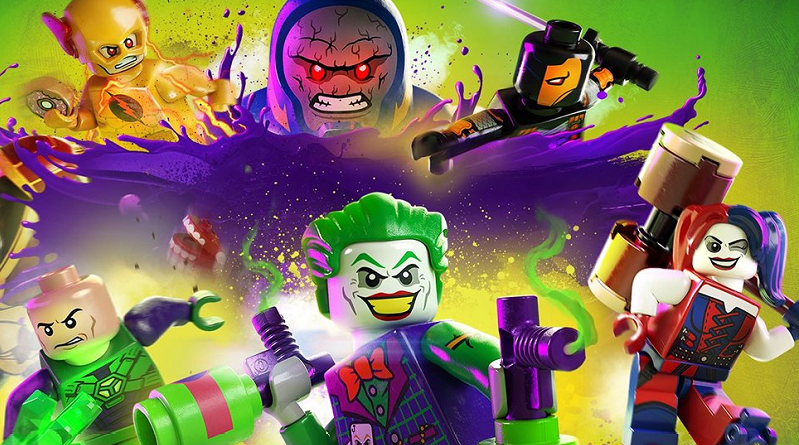
Like many licensed LEGO themes, DC properties have received their own LEGO video games over the years. The first, LEGO Batman: The Videogame, was released in 2008 and focuses on Batman’s adventures. It would receive a rare two sequels, and while other DC heroes appeared, the focus was still on Batman himself.
That all changed with LEGO DC Super-Villains. Released in 2018, the game sticks closely to the basic gameplay mechanics of recent LEGO titles. Players can enjoy simple action-adventure gameplay, open-world exploration, and a spot of puzzle-solving along the way.
That said, LEGO DC Super-Villains differentiates itself in a few key ways. The most obvious shift is in the character roster; earlier LEGO superhero games kept the focus largely on the good guys. This time around the Justice League has been benched by the malevolent Justice Syndicate, leaving DC’s villains to (literally) pick up the pieces.
The voice cast is another differentiation. Voice actors such as Kevin Conroy and Mark Hamill – famous for voicing Batman and the Joker respectively – reprised their roles for the first time in a LEGO game. Other actors like Nolan North – a voice acting veteran, and star of the Uncharted video games – also popped up to lend their talents.
In true LEGO spirit, LEGO DC Super-Villains puts a custom LEGO character at the centre of things for the first time. Custom characters have long been a feature of LEGO games; titles like LEGO Star Wars II: The Original Trilogy, first released in 2006, offers such a function. However, this time around, the custom character is at the heart of the story. Playing through the game unlocks new abilities for them, which in turn allows them to better interact with the game world.
LEGO Tumbler
In 2005, a brand new Batmobile appeared in the DC universe. The Tumbler originally showed up in 2005’s Batman Begins, the first entry in Christopher Nolan’s Dark Knight Trilogy. An off-road military prototype, the Tumbler immediately differentiated itself from its predecessors thanks to its brutish design and large frame.
Tumblers have been surprisingly prolific in the broader LEGO product range. The first one appeared in 2008 in 7888’s The Tumbler: Joker’s Ice Cream Surprise, with slightly more accurate ones popping up in 2013 and 2014. The latter year included the first large-scale iteration. 76023 The Tumbler features both internal and external details, as well as exclusive minifigures for Christian Bale’s Batman and Heath Ledger’s Joker. We actually reviewed that version, andyou can read it for yourself here.
In 2021, the large-scale Tumbler received an updated version. 76240 Batmobile Tumbler is rather close to the original one; they feature similar dimensions and piece counts, and even feature the same characters (albeit with slightly different outfits). The new Tumbler also receives a different set of rear wheels from the original release. Peeking inside reveals the Tumbler’s various control systems, which use stickers for additional detail. Check outour review of this version tooif you’d like to compare the large-scale Tumblers.
LEGO Batmobile
Given Batman’s popularity, there have been plenty of LEGO Batmobiles over the years. However, there are definitely some that stand out from the crowd.
76139 1989 Batmobile is one such model. As the name suggests, it draws inspiration from Tim Burton’s Batman movie, which was released in 1989. With its sleek shape, front turbine engine and prominent wings, it’s among the Batmobile’s most recognisable versions.
Measuring almost 61cm long, the LEGO 1989 Batmobile is an eye-catching display piece. However, there are also some interactive elements: the front wheels include fully-functional steering, and there are retractable machine guns and a sliding cockpit canopy. It’s no slouch in the minifigure department, either – buyers of the set could enjoy minifigures of Michael Keaton, Jack Nicholson and Kim Basinger’s characters from the movie, with a film-accurate cowl and cape for the Batman minifigure.
For fans of the Adam West era, 76188 Batman Classic TV Series Batmobile may be a better choice. This version of the Batmobile has appeared once before, in 76052 Batman Classic TV Series – Batcave. As a (considerably cheaper) standalone model, though, 76188 may prove more attractive.
Featuring Adam West’s Batman and Cesar Romero’s Joker (complete with moustache), the Batmobile’s black and red colour scheme is blessedly preserved. Other internal features like the Batphone make an appearance as well, though Burt Ward’s Robin is conspicuous by his absence. Regardless, this is a very solid iteration of the vehicle overall.
LEGO DC Black Friday
Check back here around Black Friday for our LEGO DC discount predictions.
